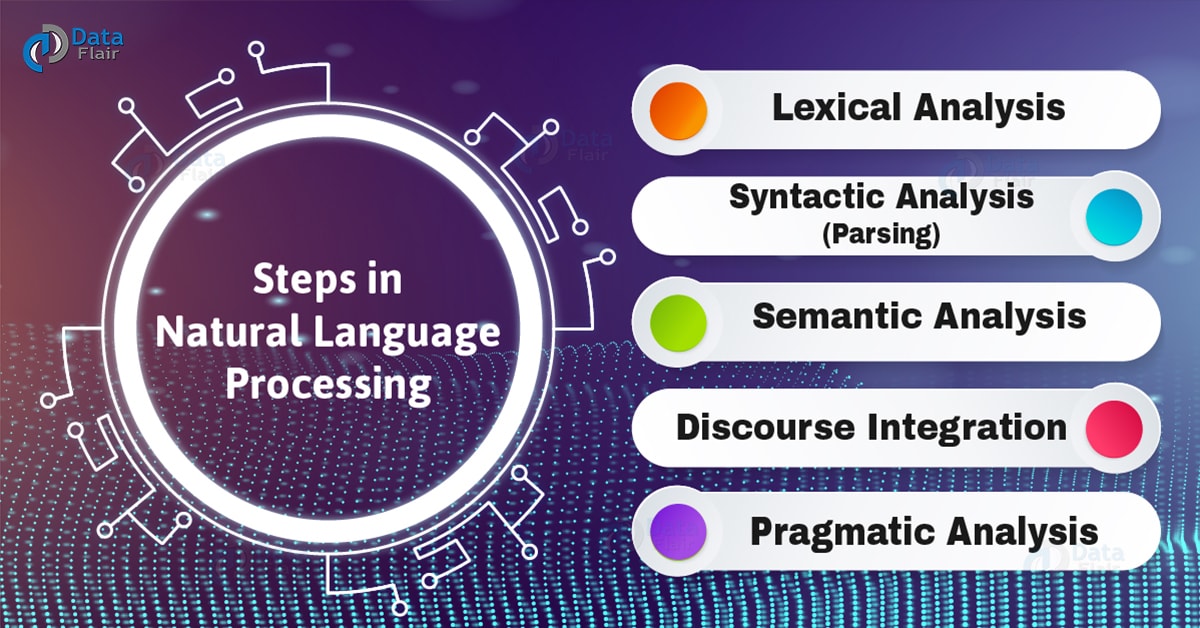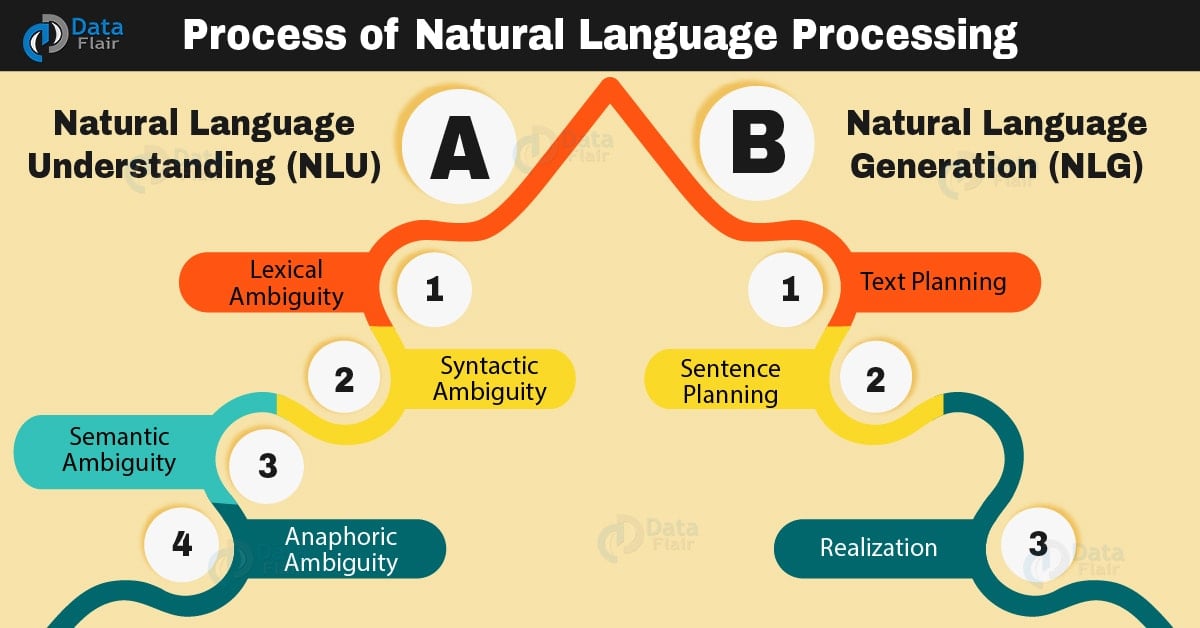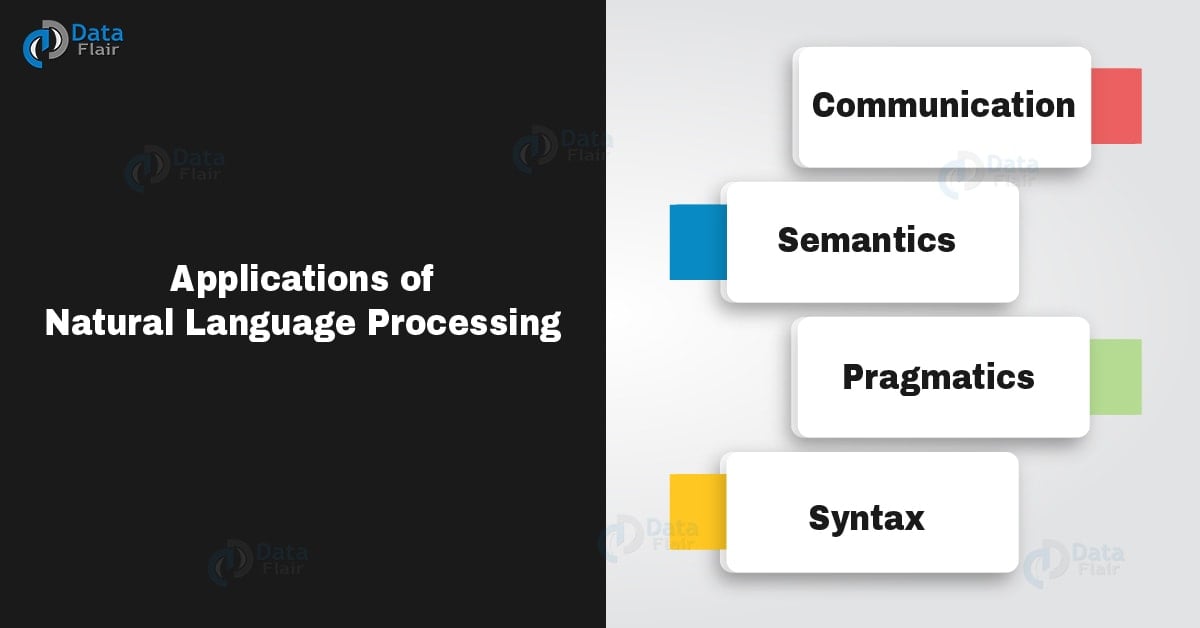What is Natural Language Processing in Artificial Intelligence?
Free Machine Learning courses with 130+ real-time projects Start Now!!
In this NLP AI Tutorial, we will study what is NLP in Artificial Language. Moreover, we will discuss the components of Natural Language Processing and NLP applications. Along with this, we will learn the process, steps, importance and examples of NLP.
So, let’s start Natural Language Processing in AI Tutorial.
What is NLP (Natural Language Processing)?
- Speech
- Written Text
Components of NLP
a. Natural Language Understanding (NLU)
In this, we have to understand the basic tasks −
- Basically, the mapping to given input in natural language into useful representations.
- Analyzing different aspects of the language.
b. Natural Language Generation (NLG)
We have to produce meaningful phrases and sentences. That is in the form of natural language from internal representation.
- Text planning
- Sentence planning
Difficulties in NLU
Natural Language Processing – Terminologies
- Syntax
- Semantics
- Pragmatics
- World Knowledge
Steps in NLP
Examples of NLP Systems
Let’s see some example which clears our vision of Natural Language Processing:
- As it’s a most important factor that helps companies to discover relevant information for their business. Further, helps in improving customer satisfaction.
- As more suggestion comes, it’s more relevant services are better. Also, helps in understanding the customer’s needs.
Why Do We Need NLP?
With this, we can perform certain tasks such as Automated speech and automated text writing in less time.
The Process of Natural Language Processing
In the NLP process, a text is composed of speech, speech-to-text conversion is performed.
- Natural Language Understanding
- Natural Language Generation
a. Natural Language Understanding (NLU)
b. Natural Language Generation (NLG)
Basically, automatic text produced from structured data. That is in a readable format with meaningful phrases and sentences. Although, the problem of natural language generation is hard to deal with. It is a subset of NLP.
Applications of NLP
- Basically, a computer is a medium to communicate with users. Also, to learn a new language we can’t force users. Although, for casual users, it’s most important. Such as Managers and children. As they don’t have time and inclination to learn new skills to learn new interaction skills.
- Basically, in natural language, it’s having a vast store of information. That we have to access via computers. Although, we have to generate information constantly. Also, it’s in the form of books, business, and government report.
- Generally, in natural language processing, problems of AI arise in a very clear and explicit form.
- Moreover, there are three major aspects of any natural language understanding theory:
Importance of Natural Language Processing
Conclusion
As a result, we have studied Natural Language Processing. Also, learned its components, examples and applications. Although, usage of images gives you a better understanding. I hope this blog will help you. Furthermore, if you feel any query, feel free to ask in the comment section.
Your opinion matters
Please write your valuable feedback about DataFlair on Google





details required